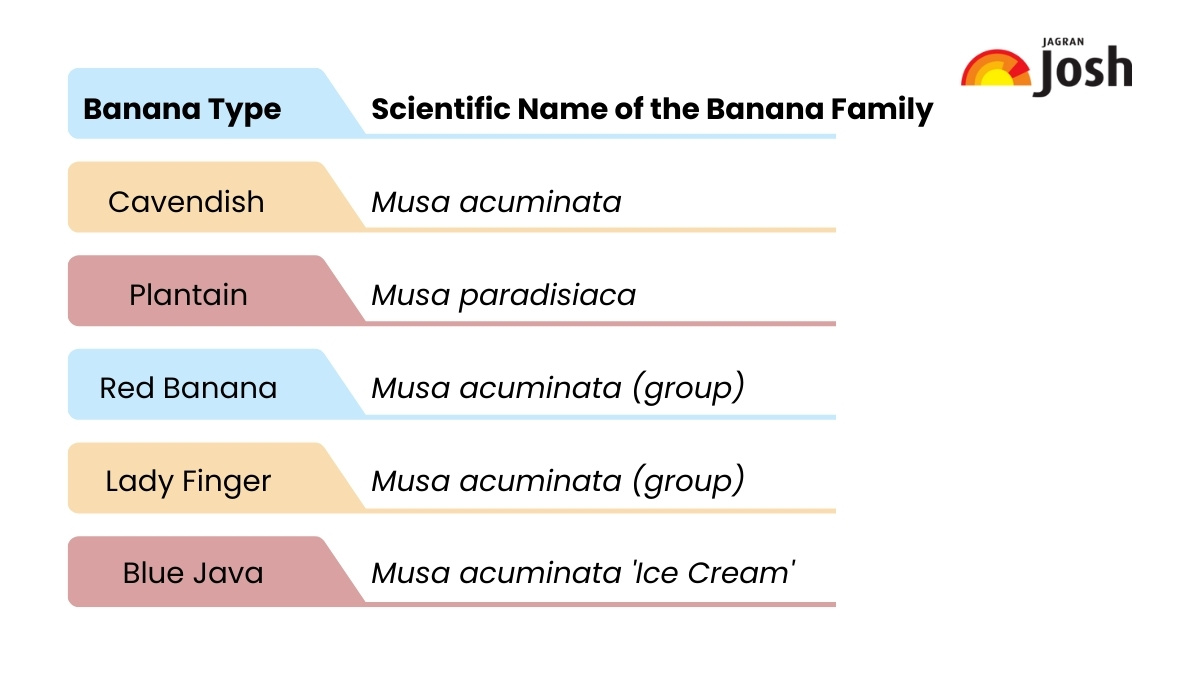Scientific name for banana: Many of us see bananas as a simple, everyday snack, but only a few know about their history and precise scientific classification. However, knowing their botanical name can help us learn more about their family and how they fit in with other plants around the world. More importantly, it is a key to understanding where they came from and how they work. In fact, according to a recent report by the World Bank, over 100 million tons of bananas are produced each year. No doubt they are a staple food for millions of people worldwide. Let’s peel back the layers and learn all about the banana’s scientific name.
What is the Scientific Name for a Banana?
The scientific name for the banana is primarily Musa sapientum for the sweet dessert banana and Musa paradisiaca for the plantain. Carl Linnaeus, a Swedish botanist, came up with this two-part naming system called binomial nomenclature.
Musa is the first word, and it is the genus that groups together species that are similar. The second word, sapientum or paradisiaca, is the species, which tells you what kind of thing it is.
This system gives each organism a unique, universal name that doesn't change from language to language, which avoids confusion.
Check Out: What is the Scientific Name for Water?
List of Banana Family Name
There are over 1,000 types of bananas in the world, as officially documented by organizations like the International Banana Association. These different types are classified into several groups. Here is a brief look at some of the most common banana types and their scientific names.

| Banana Type | Scientific Name | Trivia |
| Cavendish | Musa acuminata | Most common commercial banana |
| Plantain | Musa paradisiaca | Used for cooking, starchier |
| Red Banana | Musa acuminata (group) | Red or purple skin, sweet |
| Lady Finger | Musa acuminata (group) | Small and sweet, thin skin |
| Blue Java | Musa acuminata 'Ice Cream' | Sweet flavor, often with a blue peel |

Red banana - Type of Banana
Check Out: What is the Scientific Name of Fish? Check Their Types and Habitat?
What is the Scientific Name of the Banana Tree?
People often call it a banana tree, but it's actually a huge herbaceous flowering plant, not a real tree with a woody stem. The banana plant's scientific name is Musa. There are both fruit-bearing plants and many wild, non-fruiting plants in this genus. The table below gives more information about how scientists classify the banana plant, such as its family and order, which show how it is related to other plants.
| Classification Level | Scientific Name of Banana Tree | Notes |
| Kingdom | Plantae | All plant life |
| Clade | Tracheophytes | Vascular plants |
| Order | Zingiberales | Includes ginger, heliconias, and other related plants |
| Family | Musaceae | The banana family |
| Genus | Musa | The genus for all bananas |
| Species | Musa acuminata | A key wild ancestor of modern bananas |
Where do Bananas Come From?
Bananas originated in Southeast Asia, specifically in the tropical regions of Malaysia, Indonesia, and the Philippines. They were first domesticated thousands of years ago, and early evidence suggests they were grown as early as 5000 B.C.E. Today, they are cultivated in over 135 countries. The biggest producer of bananas globally is India, followed by China and Indonesia. Bananas grow on large herbaceous flowering plants, not trees, as is a common misconception. The "trunk" is actually a pseudostem made of tightly packed leaves.
Origin History of Scientific Name
The use of scientific names is essential for global communication in science. This system, established by Carl Linnaeus in the 18th century, provides a standard, unambiguous way to identify every living organism. Using local or common names could lead to a lot of confusion because they can vary greatly from one place to another.
For instance, a plantain might be called something else in another country or language. The two-part scientific name, which includes the genus and the species, lets scientists all over the world know that they are talking about the same thing.
Check Out: What is the Scientific Name of Human Beings?
The Scientific Name's Role in Modern Banana Breeding
The scientific names of bananas are more than just a classification; they are a vital tool for modern genetic research and crop breeding. The Cavendish banana, which makes up most of the world's production, is an example of a sterile hybrid.
Scientists are looking into the wild ancestors of the banana, which are Musa acuminata and Musa balbisiana. It will help in fighting Panama Disease (Fusarium wilt TR4), which is a threat to banana crops. By looking at the genetic blueprints of plants and using their scientific names to trace their family trees, they can make new plants that don't get sick.
This shows that the Linnaean system, which was made hundreds of years ago, is still very useful for solving important problems in food security and agriculture today.
In conclusion, knowing the scientific name for a banana and its family is more than just a fun fact. It shows that we can plan things on a global scale. It is to protect the environment and keep farming going while dealing with problems like disease and climate change.
To see more of such stories, you can go ahead and add this site to your preferred sources by clicking here.
Comments
All Comments (0)
Join the conversation